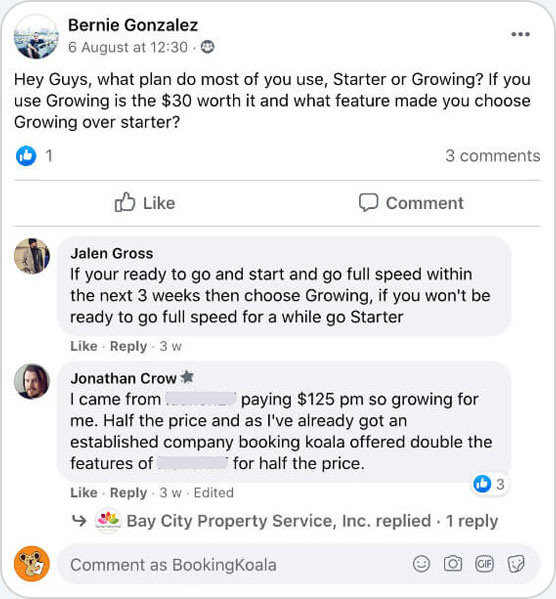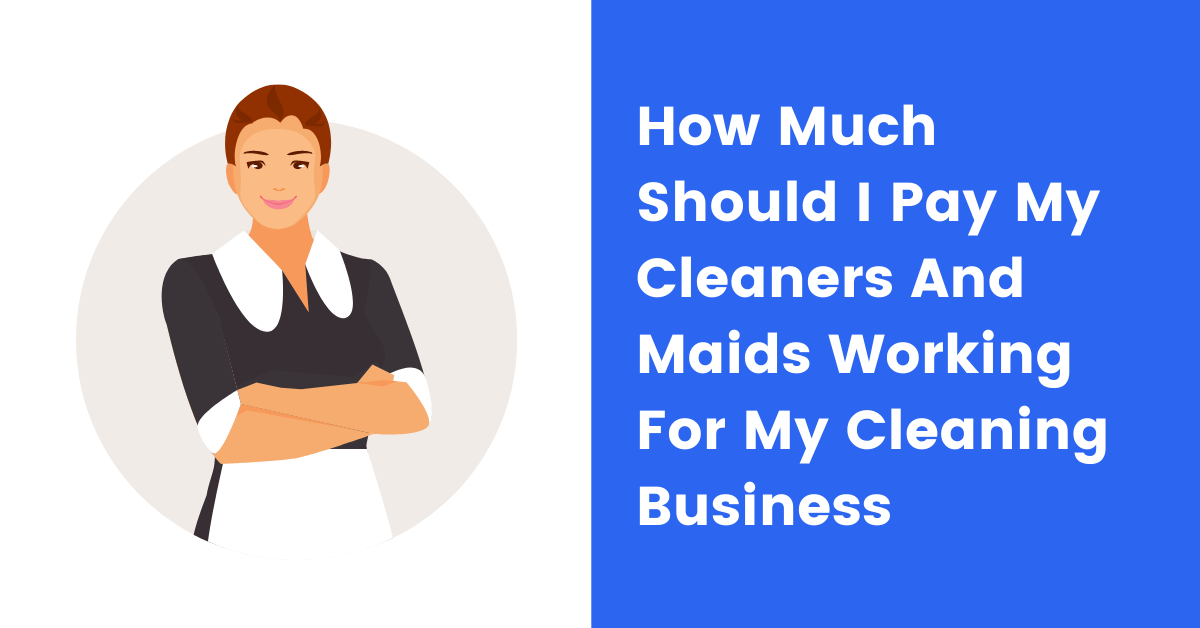
Owning and operating a cleaning business involves a multitude of day-to-day functions. One of the most critical functions consists of the payment of your employees. How much you choose to pay will depend on various factors. The first and most crucial aspect to consider is the average rate of competing employers. Once this has been determined, you can decide by which method you prefer to pay your employees. You may choose to pay per job, by the hour, or by the hour with incentives. Third, you must determine a base rate, which will be the minimum wage that you will pay per job or the minimum wage that you will pay per hour. Next, you will calculate the most beneficial pricing structure for your cleaning business. Finally, choosing a set wage and implementing the pay structure will finalize your plan.
First, it is vital that you perform research to determine the average going rate for employees of cleaning businesses in your surrounding area. You will want to also look at your competitor’s pay scales, where available, to determine how competitive your business will be regarding wages paid to employees. This step will require moderately extensive research, but will create the foundation for your pay scale.
Second, it is necessary to determine if you will pay your employees per job, pay them per hour, or pay them per hour with objectives. This determination will also be a factor in if your workers will be classified as independent contractors or as employees. As a cleaning business, you have the option to classify workers as either or, but there are pros and cons to each of the options. Furthermore, paying an independent contractor and paying an employee leads you down two different paths on the backend in terms of the administrative and accounting aspects.
The next step in deciding how to pay your cleaning business employees involves determining the base rate. Whether you choose to pay per job or per hour, you will need to specify a base rate for paying your cleaning business employees. A base rate will be the very minimum amount per hour that an employee must earn or the minimum amount per job that an independent contractor is paid per job.
Once you have determined the minimum per hour or per job rate, it is critical to decide on the pricing structure for your business. Are the fees you bill to your client based on an hourly rate? Alternatively, have you chosen to charge your customers per job? There are pros and cons to each approach, but determining which you will use and implementing said approach will provide assistance with determining how much to pay your cleaning business employees.
Finally, once each of the previous steps has been completed, you can choose a set wage and implement the pay structure into your business. This final step should be a culmination of your research, pay frequency, the base rate, and pricing structure for your business. If each step is implemented correctly, you should have developed the necessary groundwork to choose and implement your chosen wage.
Research Your Competition
The first and most crucial step of the process begins with researching your competition. As a cleaning business, the prices you set can vary widely depending on what kind of services you are offering as well as your location. In San Diego, California, cleaning services are likely to be priced higher than cleaning services in Fayetteville, North Carolina. By researching your competition both at a local and state level, you can get a closer look into your market’s average wages and even narrow it down by your specific niche.
If you are focusing on residential cleaning, then you will want to look for competitors offering similar services. Is your cleaning service more of a “touch-up” service or a “deep clean” service? These are essential factors when investigating competitor’s prices and wages. Take note of the type of pricing structures used by your competition, and if possible, use websites such as Glassdoor and LinkedIn to find statistics on their employee wages.
This information will be useful because it can help you determine whether you want to lead, meet, or lag the cleaning business market in terms of your employee wages. Leading the market would mean paying higher salaries than your competition, which could mean landing more quality workers and, therefore, longer client retention. Meeting the market means paying at or about the same amount as competitors for wages. This strategy typically puts you right on par with competitors but does not lend much of an advantage to your cleaning business. A final option is to lag the market by paying your employees wages lower than your competitors. This strategy is unlikely to bring high-quality workers and could result in loss of clients due to subpar work. It is recommended that you either meet or lead the market in terms of your employee wages. Ideally, you would want to lead the market, but it may be necessary to budget tightly as a new business, so meeting the market would be a sufficient starting point.
Determining Pay Frequency
The second step in determining what wages to pay your employees is to determine the pay frequency. As a cleaning business, there are many different options for pay frequency. The first option is to pay per job. If you are going to pay per job, it is imperative that you are familiar with the labor laws applicable to your business. Paying per job does not mean you can pay your workers below the legal minimum hourly wage. A per job payment must at minimum equal the legally required minimum wage. Paying per job can be a good option if you plan on having one individual complete the job.
For example, if you are a residential cleaning business and you have a job to clean a kitchen, living room, bathroom, and dining room area, you have the option to pay per job. You could advertise, for example, $100 in wages for the job. If the cleaning job is estimated to take five hours, your approximate hourly rate would be equivalent to $20 per hour. Depending on which state you live in, that can be a high wage or a low one. This step is where your research will come into play. Refer back to your notes to find what a similar job pays competitors employees. If $20 per hour sets you to lead the market, that is a good starting point for paying by the job. Understand, though, that a higher wage means either a higher cost of service to the client or lower profits to you as a business.
Alternatively, you can choose to pay by the hour. Paying per hour can be a better option if you can make generally reliable estimates on the time it will take to complete a cleaning job. If your cleaning business is tailored to specific cleaning jobs which can easily be quantified by time, then paying per hour may be the best option. Paying per hour would mean setting a flat rate that meets or exceeds the legal minimum wage that applies to your business. It is good practice to start your workers at least slightly above minimum wage. You should review your budget and expected expenses to ensure you can afford to pay your employees at a higher rate.
Perhaps you live in California, where the minimum wage for employers with 25 or fewer employees is $13 per hour, and you want to pay your employees $16 per hour. Paying four employees for 20 hours each per week would cost $1,280. This necessary wage means any cleaning jobs performed must be completed within those allotted hours and must exceed the cost of salary enough to cover overhead costs, as well as turn a profit. Refer back to your budget and research to understand how much higher than minimum wage you can afford to pay your employees. Paying per hour can sometimes lead to issues. If workers know they are paid by the hour, it may discourage them from working with speed and precision. Employees may purposefully move slower or incur overtime, creating unnecessary costs to your cleaning business.
A solution to simply paying per hour is paying per hour with objectives. This type of hybrid pay frequency allows you to combine hourly pay and commission into one. For example, you can pay employees the minimum wage of $15, with the objective that each cleaning job must be completed within four hours. Creating goals ensures that employees are aware of the time requirements and are scheduled a four-hour block to fulfill their job duties. Training and coaching on speed cleaning can assist in each employee enhancing their capability of completing cleaning jobs in a timely and efficient manner. Those crews who do not exceed their time block for a quarter will receive quarterly bonuses correlating to the number of cleaning jobs completed within the objective time. This type of pay frequency provides motivation to workers through monetary incentives. This type of incentive is good for employees and can allow more jobs to be completed in a day if time is appropriately managed.

Join Our Facebook Community
Join Facebook GroupDetermining Base Pay Rate
Once you have settled on the pay frequency and reviewed your budget, you can determine the base pay rate. The base pay rate will be the very minimum that you will pay per job or per hour, depending on the frequency you chose. If you decided to pay your employees per job, then the minimum you pay per job can have a little more flexibility than paying wages for your cleaning business employees hourly. Paying a minimum per job could mean that $100 is the lowest you will ever pay for a job. That number can fluctuate much higher or lower, depending on your cleaning business services. For a small residential cleaning business, an example of a minimum threshold could be $70 per job. This amount may not seem like a lot, but remember that pay per job is still essentially equivalent to a specific wage per hour. In this case, if $70 is for one employee working only four hours, then the hourly rate of pay is equivalent to $17.50 per hour.
On the opposite end of pay per job is the option to pay employees of your cleaning business per hour. Payment per hour means setting a flat rate that meets or exceeds the required minimum wage to pay your employees per hour. Paying per hour is a great option if done in conjunction with objectives. Objectives allow you to set time constraints on jobs to facilitate a view of promptness and meticulousness with regard to your cleaning business. If you are known for sticking well to your advertised times, you will better retain clients. Clients prefer knowing that they need to set aside a specific amount of time for a procedure, and keeping within these time constraints can mean better profits for your cleaning business in the long run. Objectives can also help to balance out a base pay that only meets the market of competitors. Objectives are viewed as benefits by potential employees, making your cleaning business stand out more.
Determining Pricing Structure
After determining your base pay rate, you will then shift your focus to choosing your pricing structure. Knowing and understanding your pricing structure is necessary and relevant to how you pay your employees because it is the critical determinant in how much you can afford to pay your employees. If you are charging clients $200 to complete four hours of cleaning and need two people to complete the job, you can only afford to pay so much per hour. For example, if the base pay rate you chose initially equaled $15 per hour, then you would want to multiply that base pay rate by four hours and then multiply that number by two for two employees. That would equal out to a total of $120 to be paid for wages. Do you think the remaining $80 is indeed worth it? What amount of that $80 will be allotted to overhead costs, and what will actually be profit? In this scenario, to increase your profit, one of two things must change with the situation. You must increase the fee charged to clients for your cleaning services, or you must lower the wage paid to your employees per hour or per job. This correlation is the main reason why determining your pricing structure is so important. If you understand how much you are charging clients, at least on a minimal level, you can better understand how your pricing structure directly correlates with your employee wages.
Finally, once you have progressed through each of the steps, you can bring everything together to formulate a wage and implement the wage and pay structure into your cleaning business. Suppose you determined that to make a profit, the maximum you can initially afford to pay employees based on the cost of services is $15 per hour, and you have also chosen to include quarterly objectives. In that case, you can set that wage and implement the new wage and goals starting with the next pay period. Reaching the point to know what to pay the employees of your cleaning business can be a seemingly tedious process.
Despite how daunting the task may seem, following the necessary steps will ensure you reach the correct decision on the perfect wage for the employees of your cleaning business. Researching and understanding competitor pricing helped set the framework for your end wage. In-depth research was followed by pay frequency determination. Within this step, you decided whether to pay your employees wages per job, pay them by the hour, or by the hour with objectives. This decision has pros and cons, but paying by the hour with goals stands to be the most beneficial for a cleaning business. Once you determined the pay frequency, you were able to calculate your base pay rate. The base pay rate is the minimum payment per job or per hour for your employees and will lead to investigation and understanding of the pay structure of your cleaning business. As illustrated, your pay structure is imperative because charging too little for your services can mean lowered profit or reduced wages. By adequately formatting your pay structure, you can ensure both a profit for yourself as well as fair and equitable wages for your employees. You can simulate paying at each end of the spectrum to see how it will affect the wages paid to your employees. Combining each of these steps leads you to finally settle on a set wage and implement that wage during your cleaning business’s next pay cycle. It is essential to understand that once implemented; you always have the ability to make changes to and optimize or update your chosen plan. If you first start out paying per job and realize it would be more cost-effective to pay hourly, you can always go back to the drawing board and map out a plan to pay your employees per hour with or without objectives. It is a process that you will begin to perfect over time.
To help you get started in the cleaning industry, check out these helpful blog posts:
- How to start a cleaning business
- How profitable is a cleaning business
- Cleaning business marketing ideas
- Best cleaning business names
- Cleaning business insurance
- Cleaning business license
- Finding employees for cleaning business
- How much should I pay my cleaning employees
- How much should i charge for cleaning a house
- Cleaning business software

